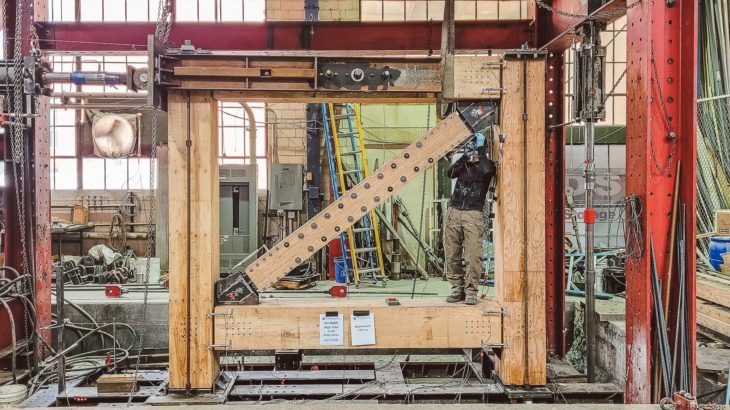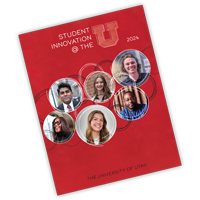Emily Williamson, a recent civil and environmental Ph.D. graduate from the University of Utah, is working to increase sustainability and seismic resilience in the construction of new structures.
Williamson’s research focused on developing a mass timber buckling restrained braced frame, which can be used in buildings located in seismic regions.
“I am really interested in seismic resilience in buildings and sustainability,” Williamson said. “Being able to build buildings with wood and wood systems increases the sustainability, as wood is a sustainable resource.”
Currently, mass timber buildings use either a steel-braced buckling restrained frame or concrete shear walls as their main lateral force-resisting system. The brace Williamson tested has a steel-yielding core, which elongates and compresses as the building shakes, but uses a mass timber casing. The mass timber casing around the steel core helps control the buckling of the core so it can have a more balanced response to tension and compression and dissipate the energy more effectively.
These buildings are more sustainable because timber is a renewable resource and is manufactured at a lower energy intensity than materials like concrete and steel. Additionally, mass timber buildings offer building envelopes that significantly reduce energy consumption and are inherently fire-resistant.
Williamson’s innovation builds on research developed by a previous graduate student, Colton Murphy. She is currently assisting her former advisor, Chris Pantelides, and the current graduate student in his lab as a consultant on the next phase of this project.
More articles like this in ‘Student Innovation @ the U!’
Find this article and a lot more in the 2024 “Student Innovation @ the U” report. The publication is presented by the Lassonde Entrepreneur Institute to celebrate student innovators, change-makers, and entrepreneurs.




